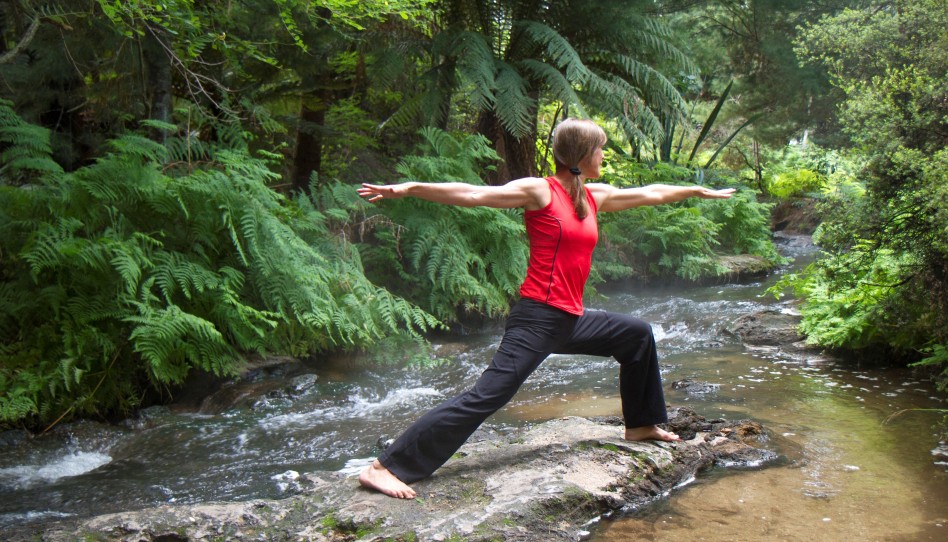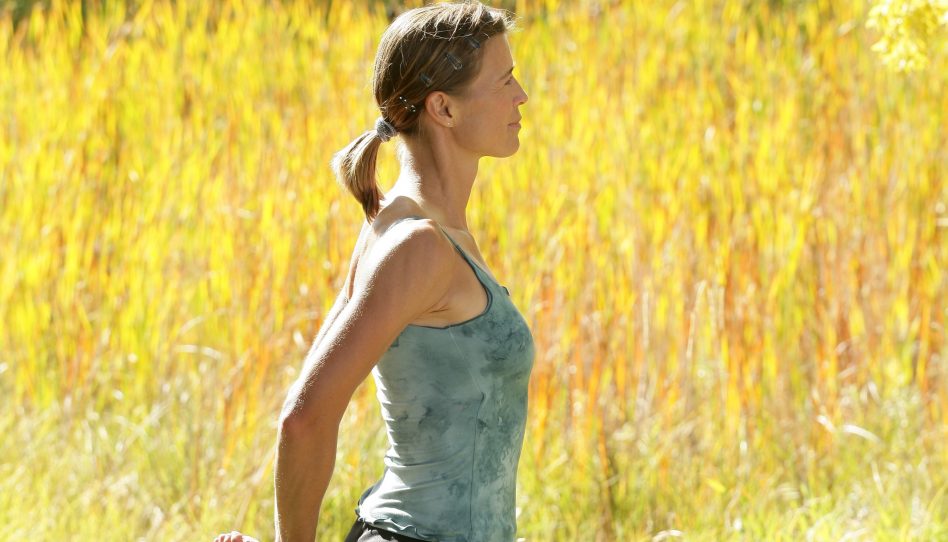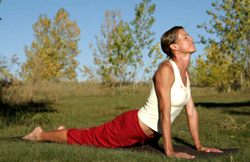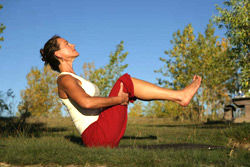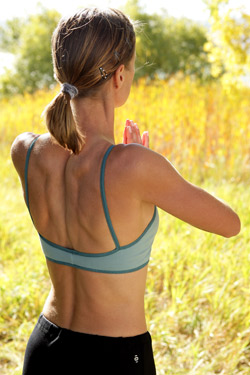Yoga — One Path, Many Styles (Part I)

Iyengar, Ashtanga, Bikram, Integral, Kripalu, or Anusara… these are just a few of the many styles of Hatha Yoga you may want to look into when you begin your own yoga practice. When people mention the term Yoga, they are usually referring to Hatha Yoga, the most physical and popular branch of the eight limbs of yoga (see article “The Eight Limbs“ on the website in May). Hatha yoga is the common denominator, the foundation, of almost all the yoga styles practiced today. It considers the body as the vehicle for the soul, using Asanas (or physical poses), Pranayama (breathing techniques) and meditation to enhance the health, freedom and integration of the body, mind and spirit. Practicing these techniques can help develop your will power, concentration and ability to quiet the senses.
In the Saskrit language of its origin, yoga actually means yolk, and hatha comes from the words “ha” or sun, and “tha” which means moon. With our bodies and breath we are bringing together opposites to create a harmonious whole. There is a union of the light or “yang“ (sun) and the dark or “yin“ (moon) currents in the system which energize and clear the energy channels.
To start your own practice, we suggest doing a little research into the style(s) that interests you. Your choice may be depend on several factors: your health and fitness level, age, mood, or even on your friends, who may already be practicing in a yoga studio nearby. Do you like practicing in a group, a private setting with a teacher, or simply in a quiet, solitary atmosphere like home?
We’ve presented a short overview of just a few of the most popular styles to get you started. Included is some information on origin and philosophy; the type of practice you might encounter; pluses of this particular style, and who might benefit the most. When you’ve decided which style suits your needs, look for a qualified local teacher to get you going. If you’re still uncertain, get out there and start taking different beginner level classes and find your style that way!
Yoga for Athletes
“Yoga for Athletes” is a welcome introduction to yoga for the sports enthusiast as well as for the professional athlete. Well-known supporters of this yoga style are teacher Rodney Yee, creator of many yoga videos for home practice, and Olympic coach and sports psychologist Dr. Aladar Kogler. Kogler created special sequences of asanas tailored to over 30 individual sports. Meditation and specific breathing techniques for use in training as well as competition are part of the program. Kogler’s believes the purpose of yoga practice is to improve training and sport performance as well as enhancing the body’s ability to rejuvenate.
Practice: “Yoga for Athletes” will guide you through yoga stretching and stabilization exercises developed specifically for your sport, concentrating on those body target zones you use most. Asanas are suggested for varying effects: there are sequences of poses to warm-up, exercises for cooling-down and more. Breathing exercises as well as meditation are woven specifically into the yoga/training practice for each individual sport. You may read more about yoga practice for athletes in the article “Yoga for the Right Balance,” which gives an introduction to my own yoga routine and further explanation on how to combine yoga and running.
Benefits: “Yoga for Athletes” promotes complete muscles alignment, stronger ligaments and greater flexibility to prevent injuries. In addition, different sequences of asanas help you warm-up for a workout or cool-down and restore energy after. This practice promotes body awareness, stress reduction, and concentration and mind control to help you prepare for training or competition.
Who is it for? We recommend this yoga style for professional athletes and for sports enthusiasts who are focused on both recreational training and competition.
More information: “Yoga for Athletes” by Aladar Kogler, PH.D. “Yoga Conditioning for Athletes” (video) by Rodney Yee
Anusara Yoga
Anusara Yoga, which means “flowing with grace,” is a heart-centered practice focusing on the correct alignment of the inner and outer body (unique for each individual) and summarized in Anusara’s Universal Principles of Alignment™. John Friend, the founder of Anusara Yoga, stresses three main principles: Attitude, Alignment, and Action. “The yogi uses Action to express his Attitude through the Alignment of the body.”
Practice: Over 250 poses may be practiced in Anusara Yoga, most of which are commonly taught in other Hatha yoga classes. An Anusara class might begin with a devotional chant and/or special theme, which will be built on throughout the class. The yoga poses are practiced mindfully from the “inside out.” Breathing exercises are sometimes taught in a harmonious interplay with the poses. The student is encouraged to enhance the beauty of his/her yoga poses with sensitivity rather than force.
Benefits: Anusara helps the beginning yoga student understand yoga principles and body awareness. Teachers of this style encourage students to develop more sensitivity to themselves and their surroundings by aligning themselves with nature, or the Divine. Other benefits include: increased power, strength and stability of the body’s muscle structure, stronger ligaments, as well as greater confidence and self-esteem.
Who is it for? This yoga style is great for beginners, intermediate and advanced yoga students, and students with therapeutic needs.
More information: www.AnusaraYoga.com
Iyengar Yoga
Created by B.K.S. Iyengar, this softer on the body classical style of yoga is one of the most widely recognized approaches to Hatha Yoga. Iyengar yoga is characterized by attention to detail within poses and the aid of the props.
Practice: The props assist all sorts of people to be able to do the poses comfortably. The key to all styles of yoga is to get the fundamentals and form correct, this is where the props aid the student. There is more focus on symmetry and alignment and also meditation. Each pose is held for a longer amount of time than in most other yoga styles, developing a state of focused calm. Iyengar Yoga is meditation in action.
Benefits: Benefits include toning muscles, eliminating tension and easing chronic pain. When we strengthen weak areas of ourselves and open and stretch tight ones, our bodies return to their correct alignment.
Who is it for? Iyengar is perfect for beginners and those who haven’t exercised in a while. It uses props such as chairs, straps, blocks and pillows, and even sandbags, to compensate for a lack of flexibility, which is helpful for anyone with back or joint problems.
More information: Read “Light On Yoga“ by B.K.S. Iyengar, or go to his home page www.bksiyengar.com
Ashtanga Yoga
Ashtanga Yoga is the system of Yoga originally taught by Sri K. Pattabhi Jois at the Ashtanga Yoga Research Institute in Mysore, India. This method of Yoga involves synchronizing the breath with progressive series of postures—a process producing intense internal heat and a profuse, purifying sweat that detoxifies muscles and organs. The result is improved circulation, a light and strong body, and a calm mind.
Practice: The challenging athleticism of Ashtanga yoga has made it very popular. Students move from one pose to another in a continual flow and combine the inhale and exhale of the breath with movements. This physically demanding yoga was developed to build strength, flexibility, and stamina. Expect the teacher to move students through a sequence of poses, which is practiced until it is mastered to some degree and the fundamentals completely understood. Then the student moves on to practice another series of poses that are more difficult, but the foundations are the same.
Benefits: If you like a full-body practice you’ll enjoy the series of poses that are a combination of standing, seated, backbends, inversions, balancing, and twisting poses, along with sun salutations and so on. There is a focus on breath control and focal point of the eyes as the students do a specific prescribed series of poses, moving gracefully from one to another.
Who is it for? This style is suitable for anyone in reasonable physical condition but should be avoided by those who are new to exercise. Even the “beginners” routines are somewhat physically demanding.
More information: “Ashtanga Yoga for Women“ by Sally Griffyn and Michaela Clarke
“Ashtanga Yoga: The Practice Manual—An Illustrated Guide to Personal Practice“ by David Swenson. The Website of Sri K. Pattabhi Jois: www.ashtanga.com
Updated December 16, 2018
- Posted April 13, 2006
© Copyright 2006-2024 Take The Magic Step®. All Rights Reserved.
